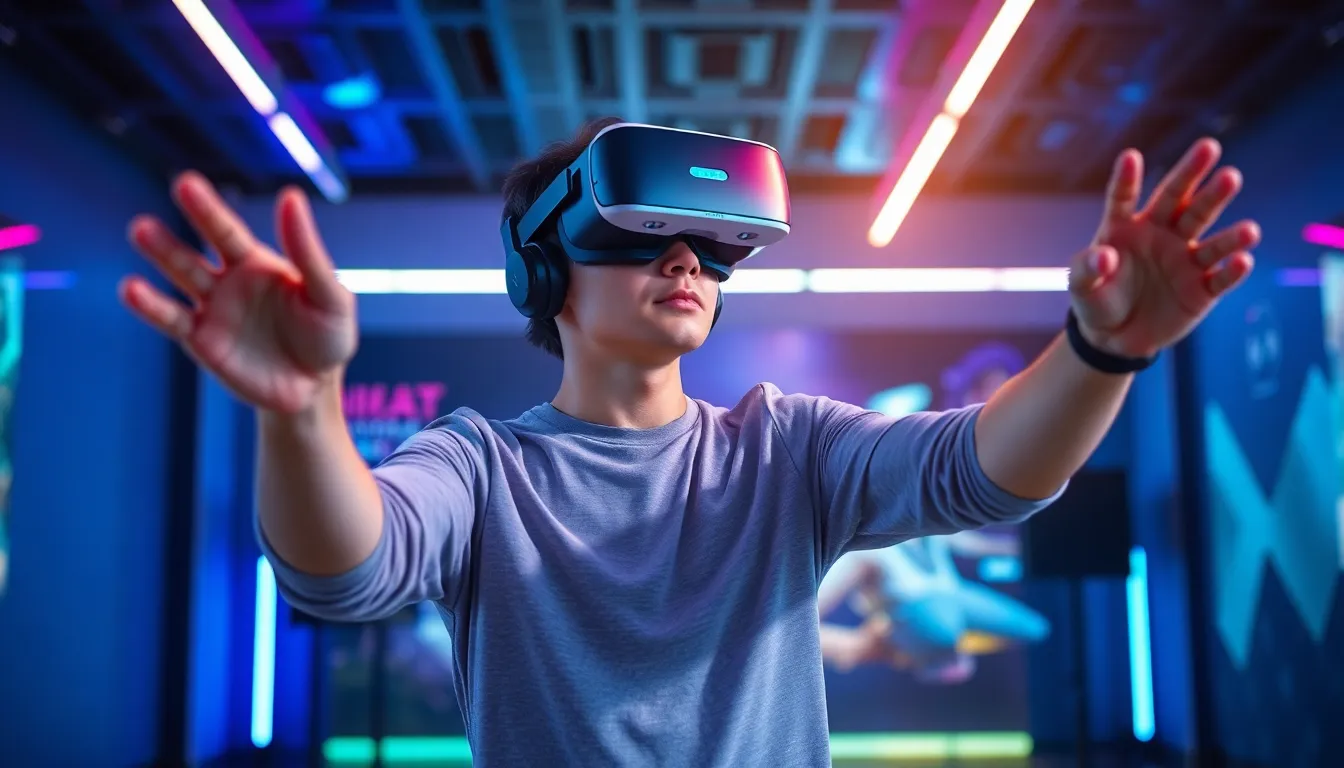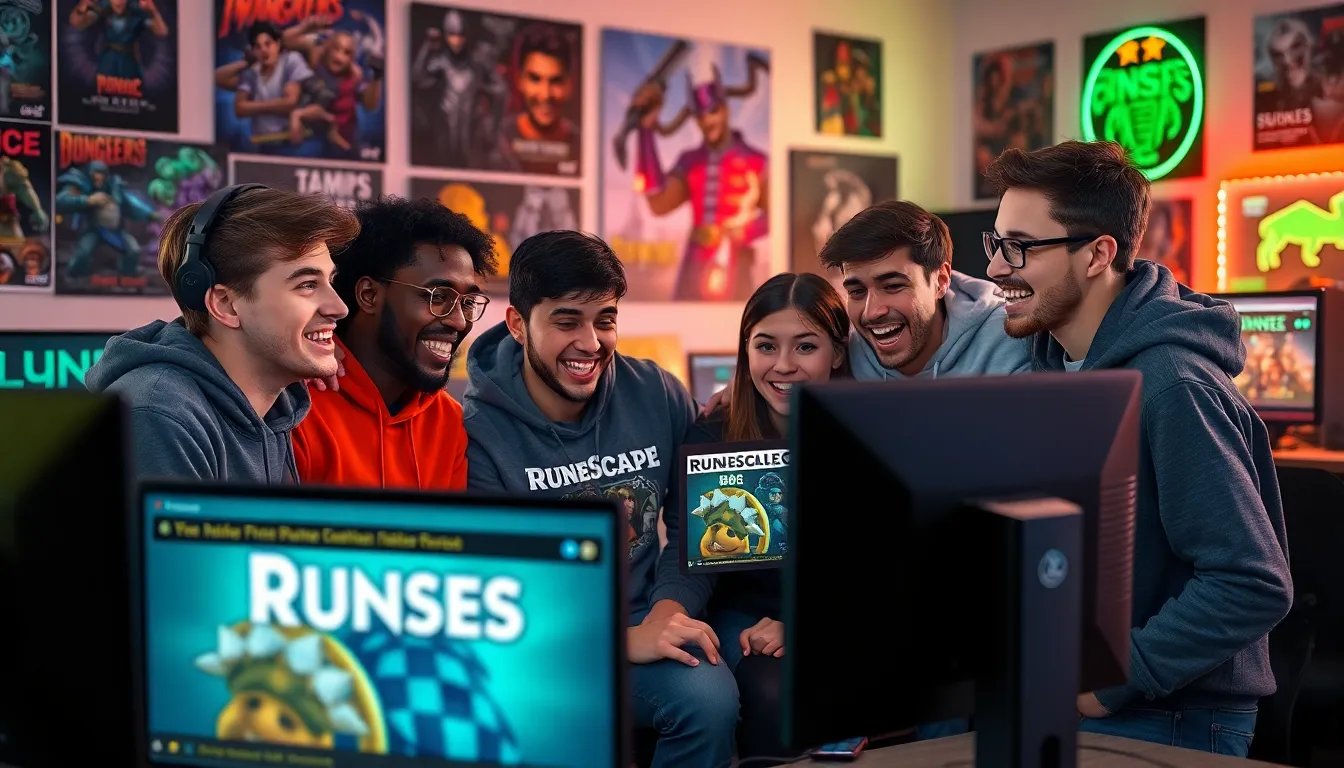Virtual reality gaming isn’t just a trend; it’s a revolution that’s about to take the gaming world by storm. Imagine diving into worlds so immersive that your couch suddenly feels like a spaceship. As technology leaps forward, VR gaming is set to evolve in ways that’ll make your wildest gaming dreams come true.
Table of Contents
ToggleCurrent Trends in VR Gaming
VR gaming continues to evolve rapidly, driven by cutting-edge innovations and enhanced user experiences. Gamers see significant changes in both hardware and software, which shape the future of this exciting industry.
Innovations in Hardware
New VR headsets feature improved resolution and field of view, enhancing immersion. Lightweight designs increase comfort during extended sessions. Additionally, advancements in motion tracking technology have led to more precise user interactions. Wireless connectivity allows for greater freedom of movement. Battery life improvements enable prolonged gameplay without interruptions. Companies are also integrating haptic feedback systems, enhancing tactile sensations. Overall, these hardware innovations elevate the gaming experience to unprecedented levels.
Advances in Software
Enhanced graphics engines drive visual fidelity, creating lifelike environments in VR games. Game developers focus on creating more dynamic and interactive worlds. Additionally, artificial intelligence is becoming crucial in crafting responsive and engaging gameplay. Cross-platform compatibility expands access, allowing players to connect regardless of their hardware. Furthermore, social features promote collaboration and competition among gamers. Ongoing updates and expansions keep content fresh, ensuring players remain engaged. These software advances significantly contribute to a richer gaming landscape.
Potential Impact on Gaming Experiences

Virtual reality gaming promises to reshape player experiences with greater engagement. Innovations are significantly enhancing immersion, capturing players’ attention like never before.
Immersion and Interactivity
Immersion reaches new heights through realistic environments and advanced technology. Gamers navigate lifelike settings, interacting naturally with their surroundings. This level of interactivity allows players to influence outcomes directly, creating a personalized experience. Tactile feedback from controllers enhances this engagement, making movements more intuitive. In immersive worlds, sensory elements contribute to realism, bringing players deeper into game narratives. Exceptional game design takes advantage of this technology to captivate users thoroughly.
Social Connectivity in VR
Social experiences in virtual reality are evolving rapidly. Players connect globally, participating in shared adventures that strengthen community ties. Real-time interactions foster collaboration and competition among gamers, enhancing the sense of presence. Virtual meeting spaces facilitate engaging conversations and events, allowing players to meet without geographical limitations. Through avatars, individuals express themselves creatively and uniquely within these environments. Gamers are increasingly forming friendships that extend beyond the virtual world, enriching their overall experience.
Challenges Facing the VR Gaming Industry
Numerous challenges confront the VR gaming industry, impacting its growth and accessibility.
Cost of Entry for Consumers
High costs deter many potential users from entering the VR gaming arena. Premium VR headsets often exceed $300, with some top models approaching $1,000. Many also require powerful gaming computers that can cost upwards of $1,500. Game titles may add additional expenses, often priced between $20 and $60 each. Bundles and accessories further increase overall investment for consumers. Consequently, affordability remains a significant barrier to widespread adoption. Consumers frequently weigh the initial costs against the perceived value of a VR experience, creating hesitation for many gamers.
Technological Limitations
Current technological constraints hamper the VR gaming industry. Despite improvements, many headsets still struggle with limited field of view and resolution issues. Motion sickness affects a portion of users due to latency and disorientation when navigating virtual worlds. Battery life often restricts prolonged gameplay sessions, with some headsets lasting only a few hours. Furthermore, the need for extensive space can complicate setup and usage, discouraging gamers with limited room. Developers face challenges optimizing software to run efficiently on varying hardware, which stifles growth. These technological limitations present hurdles that the industry must address to ensure a seamless gaming experience.
Predictions for the Future of VR Gaming
VR gaming is set for transformative advancements, addressing current challenges while enhancing immersive experiences. Developers focus on creating engaging and interactive gameplay that evolves with technology.
Evolving Gameplay Mechanics
Gameplay mechanics will shift towards greater interactivity and player agency. Developers emphasize adaptive narratives that respond to player choices, creating unique experiences. Natural interactions within virtual environments will amplify immersion, allowing gamers to utilize a variety of in-game abilities. Tactile feedback from advanced controllers enhances realism, making players feel closely tied to their virtual personas. Dynamic AI characters will engage users in more sophisticated ways, leading to unpredictable encounters. Social gameplay elements like cooperative missions are expected to grow, fostering teamwork among players across various platforms.
Integration with Other Technologies
Integration with cutting-edge technologies will redefine VR gaming’s landscape. The Internet of Things (IoT) will connect devices, enhancing immersion through smart home interactions. Augmented reality (AR) elements are likely to blend into VR experiences, enriching gameplay with contextual information. Cloud computing will facilitate seamless updates and storage solutions, allowing for expansive game worlds without hardware limitations. Furthermore, 5G networks promise faster, lag-free connections, transforming multiplayer interactions significantly. Cross-platform capabilities will ensure broader access and interoperability, bridging the gap between VR and traditional gaming environments, ultimately fostering healthier gaming ecosystems.
The future of VR gaming holds immense promise as technology continues to evolve. Innovations in hardware and software are set to create even more immersive and engaging experiences for players. As developers tackle existing challenges and integrate new technologies, the gaming landscape will transform significantly.
With advancements like cloud computing and 5G networks, multiplayer interactions will become more seamless and dynamic. The focus on adaptive narratives and personalized gameplay will further enhance player engagement. As barriers to entry decrease and accessibility improves, VR gaming is poised to reach new heights, fostering a vibrant community and redefining how players connect and interact. The journey ahead is exciting, and the potential for VR gaming is virtually limitless.







